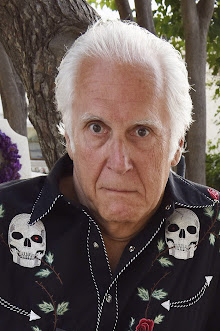Sara Johnson, 1st Sundays
I had never visited a geothermal area before living in New Zealand. The Taupō/Rotorua region on the North Island wowed me with its array of geysers, boiling springs, and steam vents. The Champagne Pool at Wai-O-Tapu Thermal Wonderland had a bright orange rim and bubbled like its namesake.
When I saw my first blooping viscous sulfurous mud pot, I knew I had to kill someone in it. The bad guy (or gal) could drag the body down the path I had just walked and dump it in. Imagine the acids and heat having their way on mortal flesh.
In my first Alexa Glock forensic mystery, an unfortunate city councilman meets his demise just that way. My working title was Thermally Dead, but my publisher preferred the alliteration of Molten Mud Murder and I acquiesced. (I like my title better.)
I thought I was the first to fictionally use a mud pot as a murder weapon. Dame Ngaio Marsh, one of the Golden Age (and beyond) greats, beat me to it in Colour Scheme, published in 1943. It’s set in the Rotorua area like Molten Mud Murder and the question boils down to: Did businessman Maurice Questing fall into the huge mud pool, or was he pushed?
Marsh, born in Christchurch in 1895, was one of the Queens of Crime alongside Agatha Christie, Dorthy Sayers, and Margery Allingham. Most of her 32 Roderick Alleyn detective novels take place in the UK where Marsh lived off and on. Besides Colour Scheme, she set three other novels in New Zealand: Vintage Murder (1937), Died in the Wool (1945) and Photo-Finish (1980). My favorite is Died in the Wool. Because – well – the body is found wrapped in a bale of wool!
Marsh was touted for including and representing New Zealand’s indigenous people with respect and cultural understanding in Colour Scheme. Like a lot of Golden Age mysteries, reading Colour Scheme today – for me – is cringe-worthy.
From the earliest days of Aotearoa settlement (somewhere between 1320-1350 CE), the Māori used and respected the geothermal activity. They utilized the hot springs for cooking and washing clothes, and – depending on the temperature – bathing. Mud from the pools was used for healing wounds and treating pain. But more than how it was used, the areas of geothermal activity were (and still are) considered sacred (taonga) places connected to the physical and spiritual world.
The following statement was made by Ngapuhi elder Kereama Rankin in regards to the Waitangi Tribunal Report 1993, commissioned to investigate breaches to the Treaty of Waitangi.
They are channels of hot water flowing underground. They knew and believed that it was one taonga, underground and up on the surface of the ground. It has been said that the hot pools represent the eye of the taonga. But its heart is within the depths of mother earth. If we abuse the very heart the pain will affect the heart, the eyes. It is all one treasure.
Until next month, friends-
Sara Johnson, 1st Sundays






















Thanks Sara. I regret to say that I haven't been to Taupō/Rotorua, but I was similarly fascinated by the similar geothermal features in Yellowstone when I visited there. I didn't immediately think of murdering someone that way - maybe because Botswana is void of any such features!
ReplyDeleteHowever, like you, Stanley and I discovered that our hyena eating the murder-victim's body in A Carrion Death had been used in crime fiction before. Elspeth Huxley used it in one of her Nairobi crime novels in the 1930s.
The saying goes - there's nothing new under the sun, including hyenas having their way on mortal flesh!
Delete